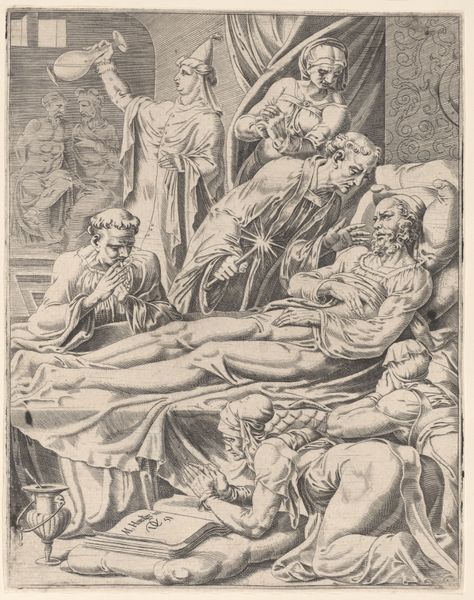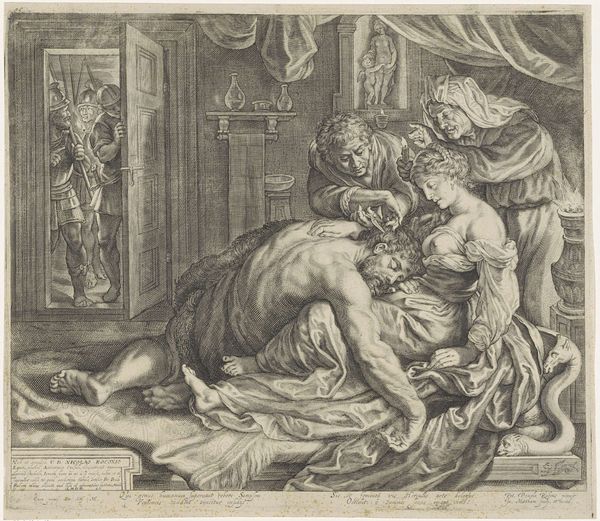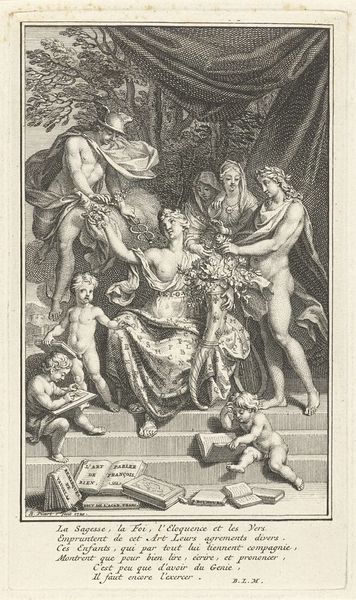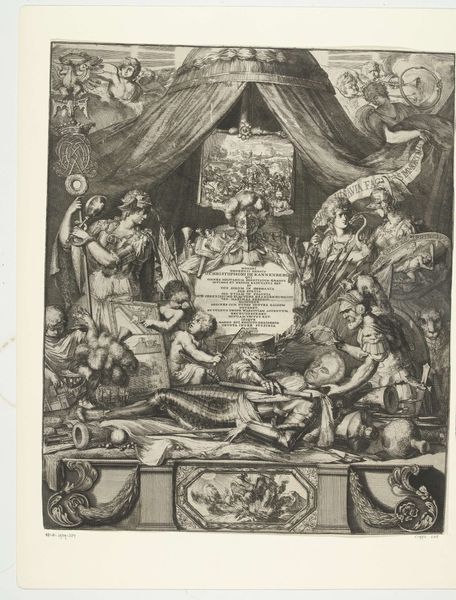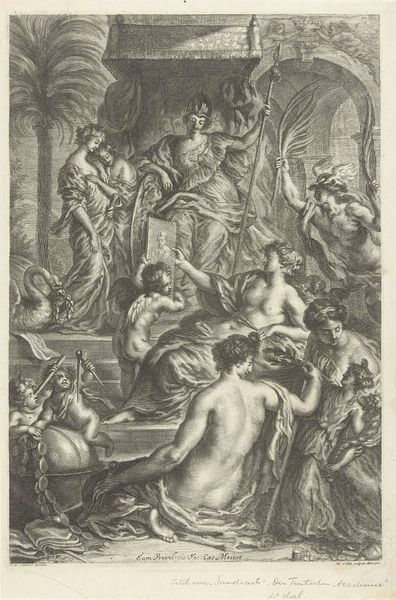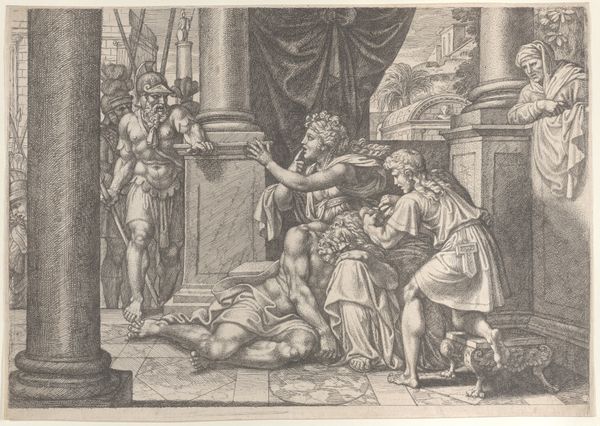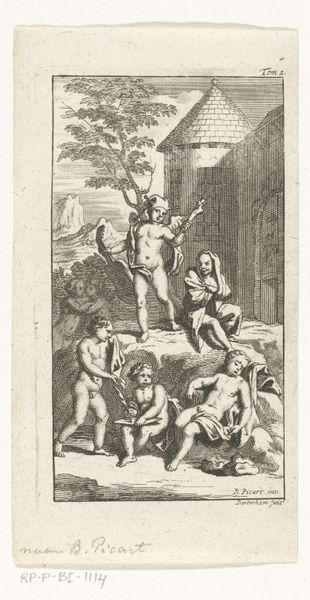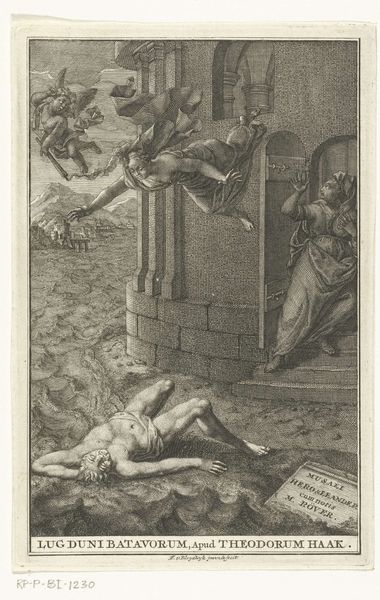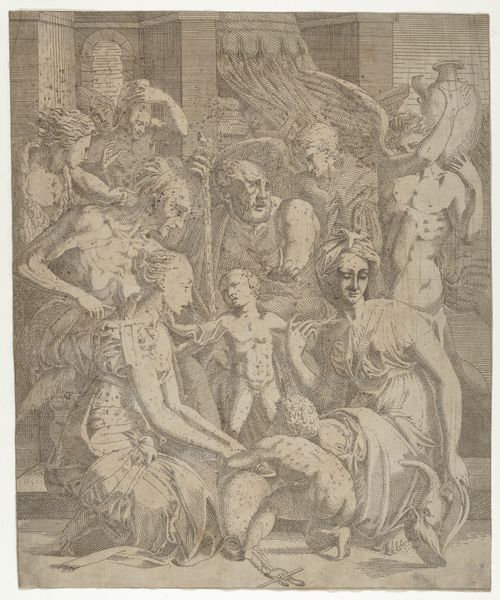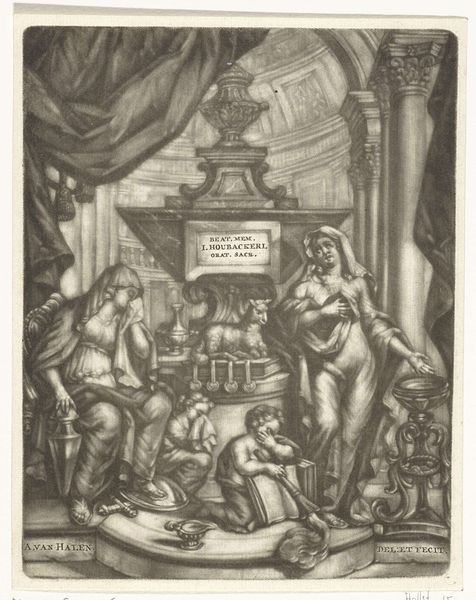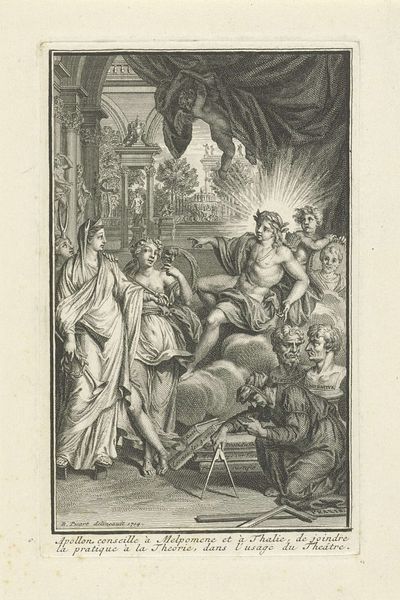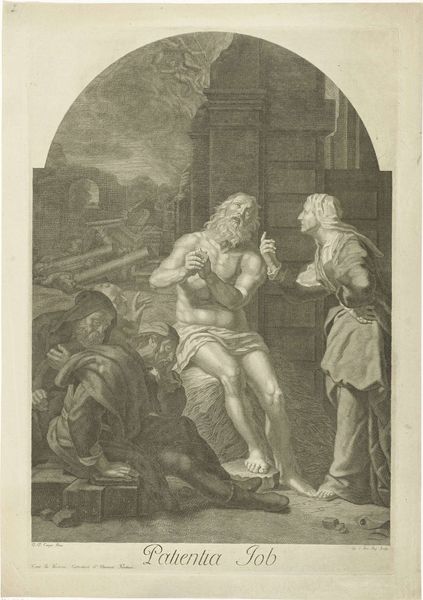
print, engraving
#
allegory
# print
#
old engraving style
#
mannerism
#
figuration
#
history-painting
#
italian-renaissance
#
engraving
Dimensions: width 179 mm, height 246 mm
Copyright: Rijks Museum: Open Domain
Theodoor Galle produced this engraving titled “The Starvation Death of Duke Ugolino della Gherardesca” sometime between 1592 and 1633. It’s a scene lifted from Dante’s Inferno, recounting the tragic imprisonment and starvation of Ugolino and his sons. Made in the Netherlands, this print reflects the period’s fascination with classical and literary themes, filtered through a Northern European sensibility. Galle, working within a well-established printmaking industry, would have been catering to a market of educated elites interested in moralizing narratives. The image doesn't shy away from depicting the grotesque reality of starvation, yet it also frames the event within a moral and historical context. The figure in the foreground, a river god, perhaps symbolizes Ugolino's past power contrasting with his present state. To truly understand this work, one can delve into the history of Dante’s influence, the culture of printmaking in the Netherlands, and the political context of the Ugolino story itself. By looking at these sources, we can better understand how Galle's image participates in a broader dialogue about justice, power, and human suffering.
Comments
No comments
Be the first to comment and join the conversation on the ultimate creative platform.

